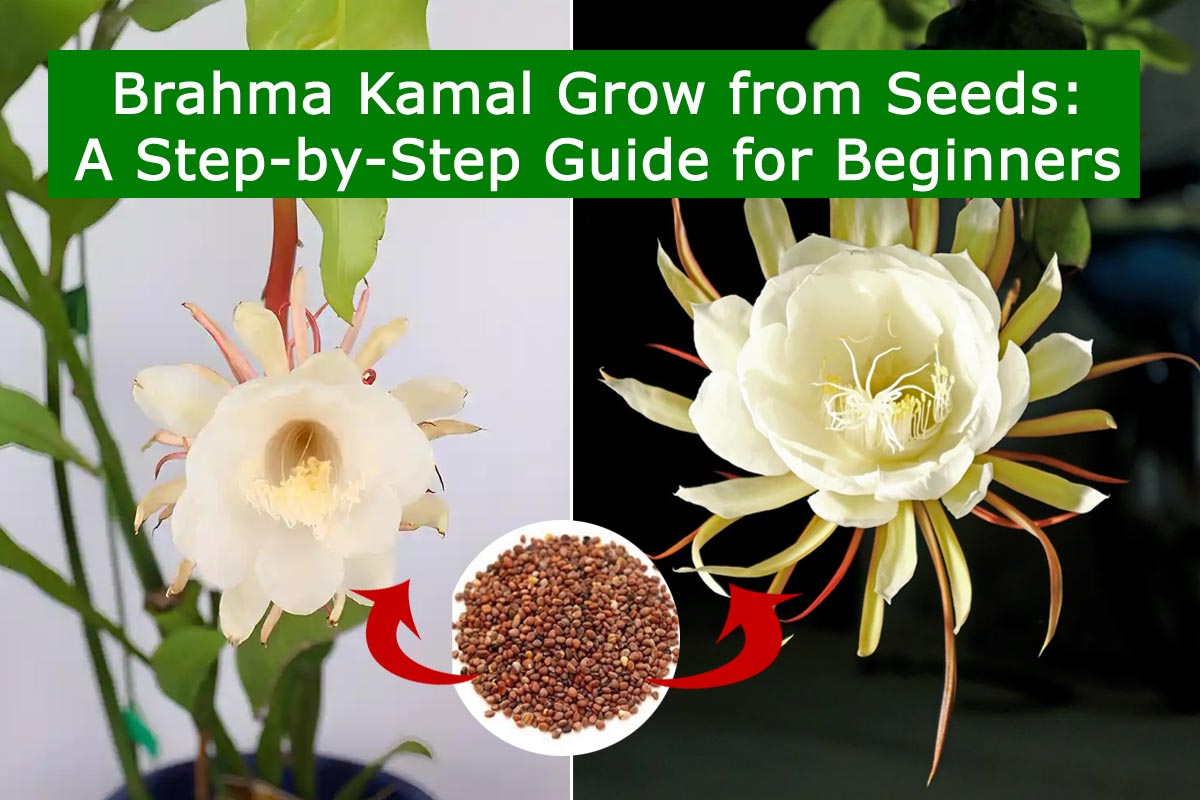
Brahma Kamal Grow from Seeds: A Step-by-Step Guide for Beginners
The Brahma Kamal, the Queen of the Night or Saussurea balata, is a rare and exquisite flowering plant with significant cultural and spiritual importance in various traditions. Revered for its captivating beauty and unique blooming pattern, the Brahma Kamal is often associated with purity and divine energy. If you’re a beginner looking to cultivate and appreciate this enchanting flower, this step-by-step guide is your key to a successful Brahma Kamal journey.
Understanding the Brahma Kamal
Before delving into the cultivation process, it’s essential to familiarize yourself with the Brahma Kamal. Native to the Himalayan region, this perennial plant is characterized by its large, fragrant, and trumpet-shaped flowers that bloom only at night. The Brahma Kamal is often considered a symbol of purity, spirituality, and good fortune in Hindu mythology.
Also Read This :Year-Round Blooms: Caring for Hibiscus in All Seasons
Selecting the Right Environment
Creating the ideal environment is crucial for the successful growth of Brahma Kamal. Ensure your plant receives filtered sunlight, as exposure to harsh sunlight may damage the delicate flowers. Choose a location with well-draining soil that retains moisture without becoming waterlogged. The Brahma Kamal thrives in cool temperatures, making it well-suited for higher altitudes or regions with mild climates.
Also Read This :Rooted Revelations: Unveiling the Significance of Reporting on Plant Roots in Potted Plants
Planting Brahma Kamal from Seeds:
If you’re starting from seeds, follow these steps:
Choose Quality Seeds: Obtain high-quality Brahma Kamal seeds from a reputable source.
Prepare Seed Trays or Pots: Fill seed or small pots with a well-balanced potting mix.
Sow the Seeds: Place the seeds on the soil surface and lightly press them in. Do not bury them too deep.
Provide Adequate Moisture: Keep the soil consistently moist but not soggy. Mist the surface regularly to maintain humidity.
Germination Period: Germination can take several weeks. Once the seedlings have a few leaves, transplant them into larger pots.

Also Read This :Enigmatic Allure: Unraveling the Fame of the Lotus Flower
Caring for Brahma Kamal
Watering: Maintain even moisture, avoiding waterlogged conditions. Water when the top inch of soil feels dry.
Fertilizing: Use a balanced liquid fertilizer during the growing season. Reduce fertilization during the dormant winter months.
Pruning: Trim any dead or damaged leaves to encourage healthy growth. Remove spent flowers to promote continuous blooming.
Support and Staking: As the Brahma Kamal grows, provide support to prevent its tall stems from bending or breaking.
Protect from Pests: Look for pests like aphids or mealybugs. Treat infestations promptly with insecticidal soap.
Also Read This :Best Place at Home to Put a Jade Plant, as per Vastu
Blooming and Beyond:
The Brahma Kamal’s blooming process is a magical spectacle. The flowers typically bloom at night, emitting a sweet fragrance that fills the air. Witnessing this rare event is a reward for the patience and care invested in cultivating this extraordinary plant.
Also Read This :Unveiling the Secrets to Fix Hibiscus Bud Drop: A Blooming Guide
Cultivating the Brahma Kamal is a rewarding journey that connects you with nature’s beauty and cultural significance. With the right environment, care, and patience, you can enjoy the enchanting presence of these divine flowers in your own space. Embrace the spiritual and aesthetic allure of the Brahma Kamal as you embark on this botanical adventure.
Also Read This :10 Ways to Elevate Your Home Decor with Adorable Baby Plants!
FAQ About Brahma Kamal Grow from Seeds
Q1: What is the Brahma Kamal, and why is it significant?
A1: The Brahma Kamal, scientifically known as Saussurea balata, is a rare and beautiful flowering plant native to the Himalayas. It holds cultural and spiritual significance, often associated with purity and divine energy in Hindu mythology.
Q2: Where is the best place to grow Brahma Kamal?
A2: Choose a location with filtered sunlight, well-draining soil, and cool temperatures. Brahma Kamal thrives in regions with mild climates or at higher altitudes.
Q3: Can Brahma Kamal be grown from seeds, and how is it done?
A3: Yes, Brahma Kamal can be produced from seeds. Use high-quality seeds and sow them in a well-balanced potting mix on the soil surface. Keep the soil consistently moist, and transplant the seedlings into larger pots once they have a few leaves.
Q4: When do Brahma Kamal flowers bloom, and what is the blooming process like?
A5: Brahma Kamal flowers typically bloom at night. This rare event is a magical spectacle; the flowers emit a sweet fragrance filling the air.
Q5: What is the significance of Brahma Kamal in Hindu mythology?
A5: In Hindu mythology, Brahma Kamal is associated with purity, spirituality, and good fortune. It holds a revered place in cultural and religious practices.
Q6: Can Brahma Kamal be grown in containers?
A6: Yes, Brahma Kamal can be grown in containers. Ensure the containers have well-draining soil and provide the necessary care for successful cultivation.
Q7: How do I prevent and treat pests on my Brahma Kamal plant?
A7: Keep an eye out for pests such as aphids or mealybugs. Treat infestations promptly with insecticidal soap to protect the health of your Brahma Kamal.
Q8: Is Brahma Kamal suitable for beginners in gardening?
A8: While Brahma Kamal requires specific growing conditions, it can be cultivated by beginners with proper research and attention to its needs. Following the step-by-step guide provided will help ensure a successful journey in growing this extraordinary plant.
Also Read This :Winter Greenery Secrets: Homemade Liquids to Keep Your Plants Thriving




